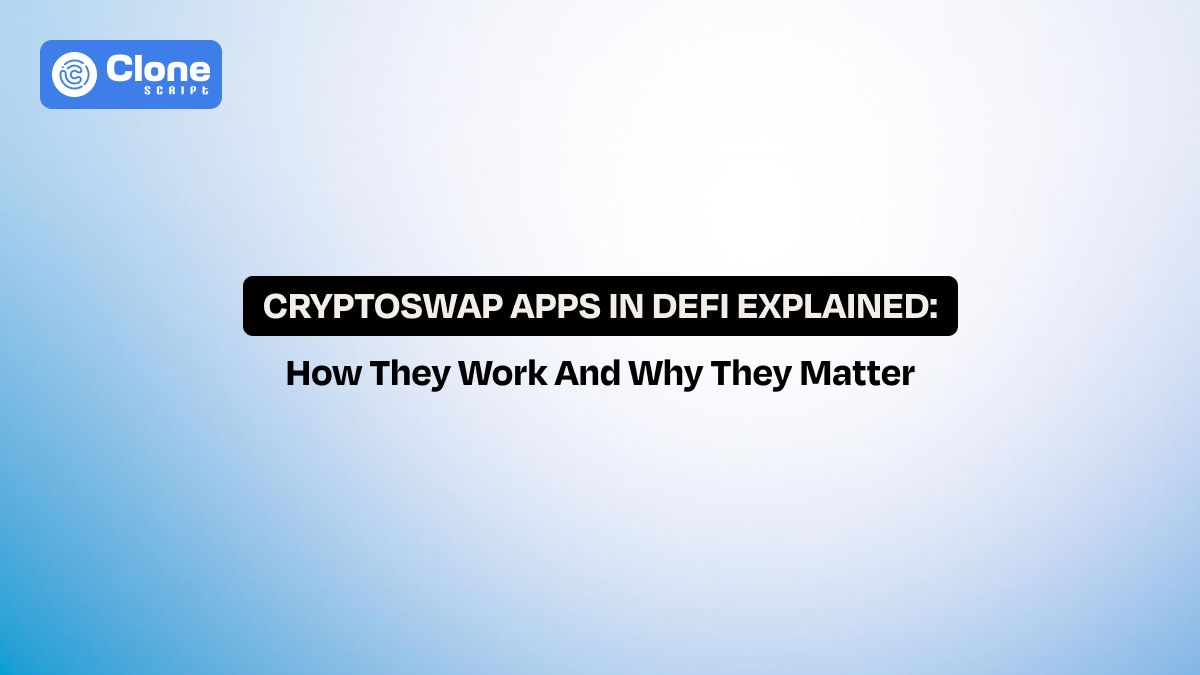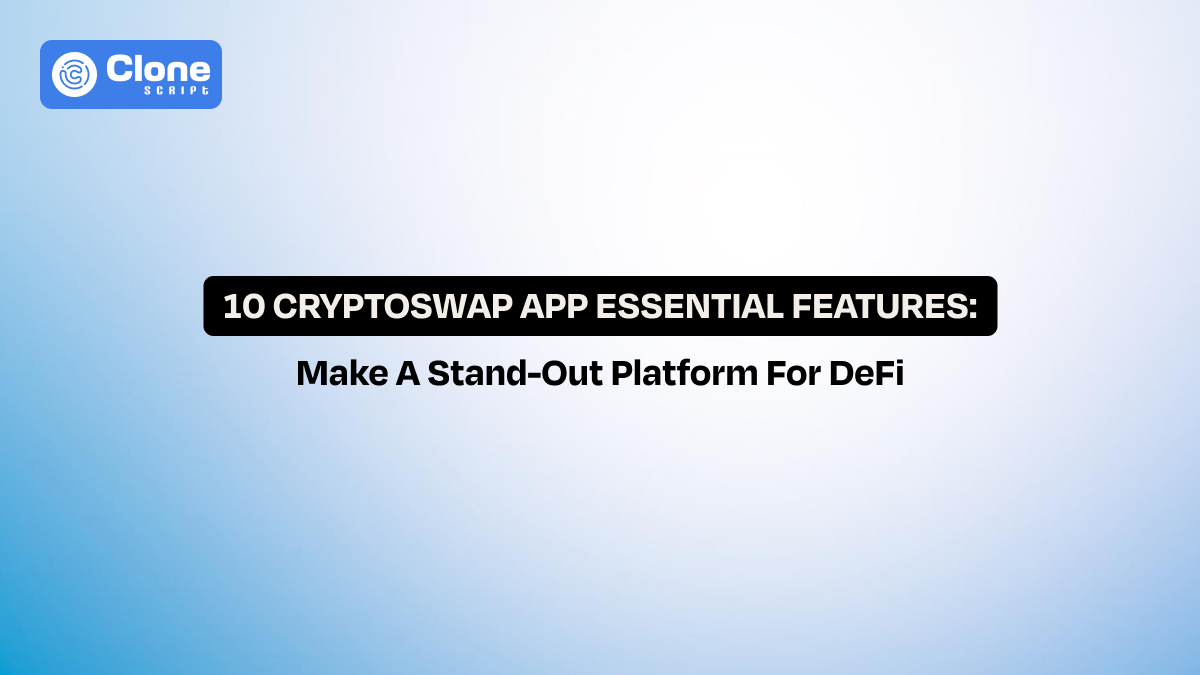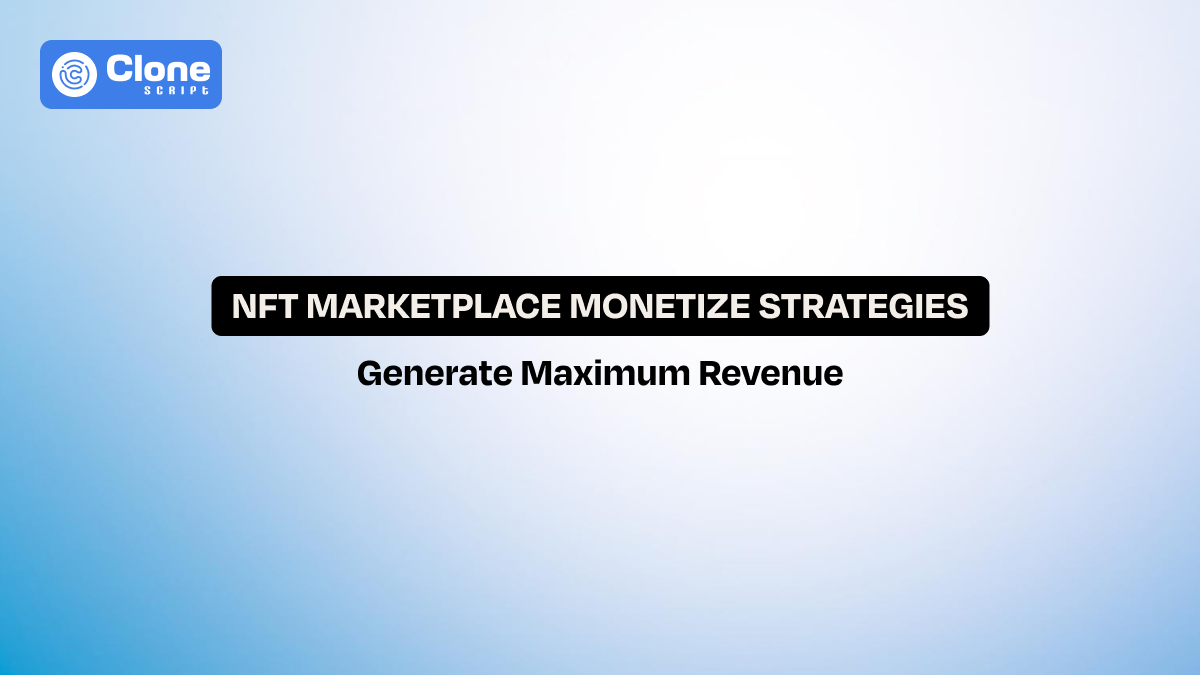Crypto Swap Apps Explained: How They Work and Why They Matter
In 2025, crypto users are swapping digital assets faster than ever — and most of these trades aren’t happening on traditional exchanges anymore. They’re happening inside Crypto Swap apps — simple, non-custodial platforms that let users exchange one cryptocurrency for another in seconds, without middlemen.
Understanding how these apps function and why they’re gaining so much attention can help both groups — businesses can spot emerging opportunities, while developers can design products that match the next wave of user demand.
In this guide, we’ll break down everything you need to know about Crypto Swap apps — how they work, how they differ from traditional exchanges, and why they’re shaping the future of digital finance.
What Is a Crypto Swap?
At its core, a Crypto Swap is a direct exchange between two cryptocurrencies. For example, swapping Ethereum (ETH) for USDT — without going through fiat money or a centralized exchange.
In a traditional setup, if you wanted to trade ETH for USDT, you’d need to:
-
Deposit funds into an exchange,
-
Place an order through its trading engine,
-
Wait for a match, and
-
Withdraw your tokens once complete.
With a Crypto Swap, that entire process happens in one transaction, directly on the blockchain. Behind the scenes, smart contracts manage the swap automatically to check that both sides of the trade execute fairly.
This simplicity is what makes swaps so preferable. Instead of depending on an exchange’s order book, swaps use liquidity pools, a decentralized smart contract-based vaults that hold pairs of assets. The price of each token adjusts automatically based on supply and demand within those pools, a system often known as the Automated Market Maker (AMM) model.
In short, in crypto swap platforms:
-
No middlemen are required. You control your assets from start to finish. No one can have the power to touch your hard-earned earnings.
-
No waiting anymore. Trades are confirmed once your blockchain transaction is processed. From there, getting a real-time update is a huge plus.
-
Transparent pricing. Everything happens on-chain, visible to anyone who checks. There’s no chance of any manipulation.
This setup benefits three main stakeholders.
-
For users, this means faster, cheaper, and more private transactions.
-
For developers, make a secure system to manage the entire crypto swapping platform.
-
For businesses, without the inefficiency of centralized control, they can step into the Web3 world.
Once you know what Crypto Token Swap is all about, it’s time to know how the app works in this field.
What Is a Crypto Swap App?
A Crypto Swap app takes the concept of crypto swapping and makes it accessible to everyone, investors, traders, and everyday users alike. It’s a digital platform (usually mobile or web-based) that lets you exchange one cryptocurrency for another instantly, without relying on a centralized exchange.
Think of it as the “DeFi equivalent of a currency exchange desk”, but one that runs 24/7, across borders, and under your full control. You connect your wallet, select two tokens, and execute the trade. All these have happened within seconds.
What makes this so impactful is how much user activity has shifted toward these apps. According to DeFiLlama and CoinMarketCap data (2025):
-
In Q2 2025, decentralized exchanges (DEXs) processed $876.3 billion in spot trading volume, marking a 25.3% increase from Q1 2025. This surge highlights the growing adoption of decentralized trading platforms.
-
More than 9.7 million active wallets interacted with swap-based DEXs in Q2 2025. Active wallets have grown significantly since 2023
These numbers show a massive behavioral change: users increasingly prefer non-custodial, instant swap tools over conventional exchanges that require KYC, logins, and withdrawal delays.
Talking about the Crypto Token Swap app features, they typically include the following:
-
Wallet connection: They support cryptocurrency wallets like MetaMask, Trust Wallet, or Coinbase Wallet to manage transactions.
-
Token pair selection and rate preview: From this feature, you can view live exchange rates and gas fee estimates on the app before confirming a trade.
-
Aggregator routing: Through this advanced functionality, smart algorithms find the best swap rates by scanning multiple liquidity pools.
-
Slippage control: Users can set limits to protect against sudden price swings. This will notify users before proceeding with transactions and avoid the loss.
-
Liquidity options: Many apps let users become liquidity providers and earn fees from swap activity. However, this feature will help professionals earn some extra income alongside their crypto investments.
In essence, a Crypto Swap app bridges blockchain technology and user convenience on the same platform. It translates complex smart contract logic into a clean, intuitive experience, one that provides investors with efficiency and developers with a robust platform for innovation.
You have a question about what the main reasons are behind users using these DeFi apps for their wealth management, especially in cryptocurrencies. Let’s find.
Why Crypto Swap Apps Are Becoming So Popular?
In just a few years, Crypto Swap apps have gone from niche DeFi tools to mainstream financial gateways. Their growth is no coincidence. It’s the result of changing investor behavior, smarter blockchain infrastructure, and the global shift toward decentralized finance.
Here’s why they’re attracting millions of users and billions in trading volume:
-
Speed, Simplicity, and Accessibility
Traditional exchanges often make users jump through hoops like registration, verification, deposits, and waiting periods. In contrast, a Crypto Swap app offers instant, permissionless trading.
You connect your wallet, choose tokens, and execute the swap. As simple as that, and all can be done in less than a minute.
This frictionless experience appeals to both new users and professionals seeking on-demand liquidity without paperwork.
-
Lower Fees and Better Rates
Because swaps cut out intermediaries, the cost per transaction is significantly lower. Apps that use aggregators like 1inch or Matcha further reduce cost by sourcing the best possible rate across multiple pools.
-
Security and Control
With Crypto Swap apps, users never give up custody of their funds. Your crypto stays in your wallet until the exact moment a trade executes on-chain.
In 2024, approximately $2.2 billion was stolen from cryptocurrency platforms, with a significant portion attributed to breaches in centralized exchanges. Notably, a major incident involved a $1.5 billion theft from the crypto exchange ByBit, attributed to North Korean-linked hackers. This shift toward self-custody is beyond the technicality, and it’s a matter of trust.
-
Expanding Token Access
Centralized exchanges list major coins, leaving smaller or newer tokens out. So, what’s for users who want to swap the other digital currencies, like the most famous meme coins?
Swap apps change that.
Users can access thousands of tokens directly from liquidity pools and often the same day they launch. For developers, this is a game-changer, getting faster market entry and early liquidity for new projects.
-
DeFi Integration and Yield Opportunities
Many Crypto Swap apps integrate deeper with DeFi. The intention is to offer yield farming, staking, or liquidity incentives.
As of Q3 2025, the total value locked (TVL) in decentralized finance protocols reached a record $237 billion, with a significant portion attributed to swap-based protocols. This indicates a robust growth in liquidity within decentralized platforms.
-
Cross-Chain and Layer-2 Compatibility
The new generation of swap apps supports multi-chain functionality. What does it mean? This allows users to exchange tokens across different blockchains like Ethereum, BNB Chain, and Polygon. With Layer-2 solutions now reducing gas fees by up to 90%, these apps make DeFi faster and more affordable than ever.
In summary:
Crypto Swap apps are popular because they deliver what centralized platforms can’t — speed, control, lower costs, and access to a borderless financial system. As user trust in self-custody grows, these apps are becoming the foundation of everyday crypto transactions, not just an alternative.
The concept is clear, and the demand is growing. But the question is, how do the apps work? The next section will clarify it.
How a Crypto Swap App Works?
At first glance, a Crypto Swap app seems simple — connect a wallet, pick two tokens, and tap “Swap.” It’s done.
But behind that simplicity, a sophisticated chain of smart contracts, liquidity pools, and blockchain logic that makes instant, trustless exchange possible.
Let’s walk through how it all works — step by step.
1. Wallet Connection and Token Selection
Every swap begins with your wallet. Users connect through wallets such as MetaMask, Trust Wallet, or Coinbase Wallet using standard protocols like WalletConnect.
The app reads your wallet’s token balances, then lets you choose the token you want to swap (Token A) and the token you want to receive (Token B).
For example, you might want to exchange 0.5 ETH for USDC.
Once you select the pair, the app automatically pulls live exchange data from decentralized liquidity sources. It shows you the following:
-
Current exchange rate
-
Estimated network (gas) fee
-
Minimum amount you’ll receive after slippage
This transparency helps users make informed decisions before confirming any trade.
2. Price Discovery and Route Optimization
Unlike centralized exchanges that rely on order books, Crypto Swap apps depend on Automated Market Makers (AMMs). AMMs use liquidity pools where users deposit pairs of tokens (like ETH/USDC).
Prices adjust automatically based on the pool’s balance — if more people buy ETH from the pool, its price rises slightly relative to USDC. This mechanism ensures that markets always stay liquid, even without a buyer on the other side.
Advanced swap apps use aggregator logic to find the best rate for a trade. They scan multiple DEXs (like Uniswap, PancakeSwap, SushiSwap, Curve) and route your order through whichever pool gives the most favorable price.
For instance, if Uniswap offers 1,850 USDC for 1 ETH but PancakeSwap offers 1,870, the aggregator automatically routes your trade to PancakeSwap. This process ensures optimal output and minimal slippage for users to bear.
3. Transaction Confirmation and Smart Contract Execution
Once you’re satisfied with the quoted rate, you confirm the trade. Your wallet prompts you to approve two actions:
-
Grant permission to the smart contract to use your token (Token A).
-
Execute the swap transaction.
After signing, the app’s backend smart contract executes the swap on-chain. It deducts Token A from your wallet, exchanges it through the liquidity pool(s), and deposits Token B back into your account. All has been done within a single blockchain transaction.
Because this process is fully transparent, you can verify it on a blockchain explorer like Etherscan or BscScan.
4. Settlement and Final Confirmation
Once the transaction is mined into a block, your swap is complete. You’ll instantly see the updated token balance in your wallet.
For most blockchains, this takes just a few seconds — though gas prices and network congestion can affect timing. Some modern swap apps now integrate Layer-2 networks (such as Arbitrum, Optimism, or zkSync) to make swaps 10x faster and cheaper.
5. Optional: Liquidity Provision and Earnings
Crypto Token Swap apps also allow users to provide liquidity. By depositing equal values of two tokens (say, ETH and USDC) into a pool, you become a Liquidity Provider (LP).
In return, you earn a portion of the trading fees every time someone swaps using that pool.
Globally, Decentralized exchanges continue to generate substantial fees for liquidity providers. While exact figures for monthly earnings are not specified, the increase in trading volumes suggests that liquidity providers are earning significant returns.
Behind the Scenes of Swapping App (for Developers)
For app developers and blockchain engineers, a Crypto Swap app’s core architecture involves:
-
Smart contracts written in Solidity or Vyper (for Ethereum-compatible networks).
-
AMM algorithms like the Constant Product Formula (x*y = k).
-
Routing engines that determine optimal swap paths.
-
Gas and slippage optimization logic.
-
Frontend frameworks integrating Web3.js, Ethers.js, or similar libraries for wallet connection and blockchain interaction.
This infrastructure ensures a balance between the three pillars of any successful DeFi product:
-
User experience
-
Security
-
Cost-efficiency
In essence:
A Crypto Swap app simplifies one of the most complex blockchain interactions into a single, seamless experience. Behind every quick swap is an entire decentralized ecosystem that works. This includes smart contracts, liquidity pools, and automated algorithms working together to make trading truly borderless and trustless.
Knowing the app's work mechanism from now, you can better understand the entire system. But you’re eager to know what the difference is between these DeFi apps and traditional exchange platforms. Let’s get an answer.
What’s the Difference Between Crypto Swap vs Traditional Exchange?
For years, centralized exchanges (CEXs) like Binance, Coinbase, and Kraken dominated crypto trading. They still handle the majority of global volume — but Crypto Swap apps are quietly changing that balance.
While both serve the same purpose, exchanging digital assets, the way they operate, handle funds, and interact with users couldn’t be more different.
1. The Core Difference: Custody and Control
In a traditional exchange, your funds are held by the platform. You deposit your crypto, trade within its internal system, and withdraw once done. That means you don’t truly own your assets during the trade — you trust the exchange’s custody and solvency.
In a Crypto Token Swap app, there’s no middleman. You connect your wallet and execute the trade directly on-chain. You keep full control until the swap happens, and tokens move only between your wallet and the smart contract.
That’s why swap apps are often described as non-custodial — they give power back to the user.
2. A Quick Comparison: Swap Apps vs Traditional Exchanges
|
Feature |
Crypto Swap App (DeFi) |
Traditional Exchange (CEX) |
|---|---|---|
|
Control of funds |
You hold your crypto until trade execution (non-custodial) |
Exchange holds your crypto (custodial) |
|
KYC & registration |
Usually not required (wallet-based access) |
Mandatory KYC, account verification |
|
Trading process |
Direct on-chain swap using smart contracts |
Uses order books, internal servers, and liquidity |
|
Transaction time |
Seconds to a few minutes (blockchain confirmation) |
Instant internally, but deposits/withdrawals can take hours |
|
Fees |
Protocol + network fee (often 30–40% cheaper overall) |
Exchange fees + withdrawal and service charges |
|
Transparency |
100% on-chain and publicly verifiable |
Controlled by the exchange’s internal systems |
|
Risk factors |
Smart contract bugs or network congestion |
Hacks, exchange insolvency, fund freezes |
|
Token availability |
Thousands of DeFi tokens, early launches |
Limited, subject to listing approvals |
|
Accessibility |
Borderless, available 24/7 globally |
Usually region-restricted, subject to regulations |
3. Market Reality in 2025
Centralized exchanges still process a majority of global crypto trading volume. However, decentralized exchanges are experiencing rapid growth, with trading volumes increasing significantly year-over-year.
-
DEX trading volumes exceeded $898 billion in Q2 2025, a record high.
-
The number of active users engaging with swap functionalities has seen a significant year-over-year increase. This indicates growing adoption of decentralized finance solutions.
-
In 2024, Arbitrum's transaction volume increased by over 565% compared to 2023. This growth continued into 2025, with activity nearly doubling again. For instance, Arbitrum processed 2.36 million transactions per week by late 2025.
This momentum highlights a key insight for businesses: liquidity and innovation are migrating toward decentralized platforms, where efficiency meets transparency.
4. For Developers and Builders
Developers are increasingly integrating swap functionalities into apps because:
-
APIs and SDKs from protocols like Uniswap, PancakeSwap, and 1inch make it easy to embed swap logic.
-
Cross-chain aggregators simplify liquidity routing between ecosystems like Ethereum, BNB Chain, and Polygon.
-
It unlocks monetization through fee-sharing, token burns, or liquidity incentives without needing full exchange infrastructure.
Building or integrating a Crypto Swap module isn’t just a technical choice. It’s a competitive advantage in the DeFi landscape.
In summary:
Traditional exchanges gave crypto its first home, but Crypto Swap apps are giving it true freedom. They strip away centralized control, reduce cost, and empower users to trade securely, all while keeping innovation open to anyone who builds.
Security and Trust Matters in Crypto Swap Apps.
Security is the prime aspect of every successful Crypto Swap app. Unlike centralized exchanges that store user funds, swaps rely on smart contracts, removing third-party custody and minimizing attack surfaces.
To build user confidence, leading platforms adopt multiple protection layers:
-
Smart contract audits by reputed firms like CertiK or Trail of Bits.
-
Multi-signature wallets for managing protocol funds securely.
-
Bug bounty programs encourage ethical hackers to find vulnerabilities.
-
On-chain transparency, where every transaction is verifiable in real time.
According to CertiK’s Q3 2024 Web3 Security Report, $753M was lost in 155 incidents.
For businesses and developers, trust in Crypto Swap apps isn’t built on promises but on:
-
Mathematical validation
-
Public audit trails
-
Open-source reliability
Simply put, security is the new currency of trust in DeFi.
Why Crypto Swap Apps Matter for the Future of DeFi?
Crypto Swap app's significance extends across multiple dimensions:
-
Global Financial Inclusion: Anyone with an internet connection and a crypto wallet can trade and access liquidity. This opens opportunities for users in regions with limited banking infrastructure.
-
Frictionless Innovation: Developers can integrate swap app features into wallets, games, NFT marketplaces, and DeFi protocols. This creates an interconnected ecosystem of decentralized apps.
-
Democratized Liquidity: Users can provide liquidity to token pairs and earn fees. This turns passive holders into active participants in the market.
-
Cross-Chain Interoperability: Advanced swap protocols bridge multiple blockchains, including Ethereum, BNB Chain, Polygon, and Solana. This helps users to move assets efficiently across ecosystems.
-
Data-Driven Insights: Swaps generate rich on-chain metrics, giving businesses and developers insight into market trends, token demand, and liquidity flows.
In short, Crypto Token Swap apps are not just tools. They are transforming DeFi into a more accessible, efficient, and resilient financial system, shaping the future of digital finance for businesses, developers, and everyday users alike.
Conclusion
Crypto token swapping apps are becoming increasingly popular tools for managing digital assets. The simplicity, authenticity, transparency, and on-hand control of assets keep these apps on the bucket list of users. However, the risks involved in it can’t be ignored now. Ultimately, using a secure Crypto Swap platform allows users to efficiently manage and exchange their crypto assets with confidence.
FAQs
-
Are Crypto Swap apps safe to use?
Yes, if built on audited smart contracts. Top apps undergo third-party security reviews, implement multi-sig wallets, and maintain transparent on-chain activity. This reduces the risk of hacks or fund loss.
-
Can I earn by providing liquidity in a Crypto Token Swap app?
Yes. Users can stake token pairs in liquidity pools and earn a share of swap fees. This creates passive income while supporting decentralized trading and ecosystem growth.
-
Are swap fees lower than traditional exchange fees?
Generally, yes. Crypto Swap apps charge only network and protocol fees, often 30–40% cheaper than centralized exchanges, especially when aggregators optimize routes across multiple liquidity pools.
-
Can I swap tokens across different blockchains?
Modern Crypto Swap apps support cross-chain functionality via bridges. This allows users to exchange assets between Ethereum, BNB Chain, Polygon, and other blockchains seamlessly and efficiently.
-
Why should businesses and developers pay attention to Crypto Swap apps?
They are a key driver of DeFi growth, offering investment opportunities, liquidity insights, and a platform for innovative applications. Understanding swaps is essential for strategic participation in crypto finance.
 BTC - Bitcoin
BTC - Bitcoin
 USDTERC20 - USDT ERC20
USDTERC20 - USDT ERC20
 ETH - Ethereum
ETH - Ethereum
 BNB - Binance
BNB - Binance
 BCH - Bitcoin Cash
BCH - Bitcoin Cash
 DOGE - Dogecoin
DOGE - Dogecoin
 TRX - TRON
TRX - TRON
 USDTTRC20 - USD TRC20
USDTTRC20 - USD TRC20
 LTC - LiteCoin
LTC - LiteCoin







